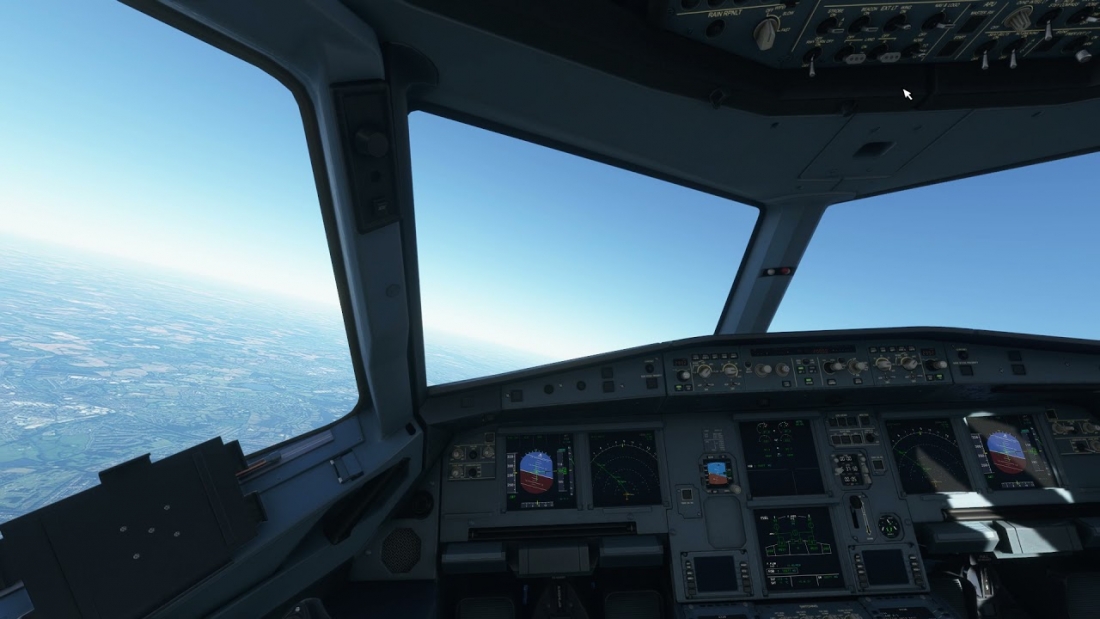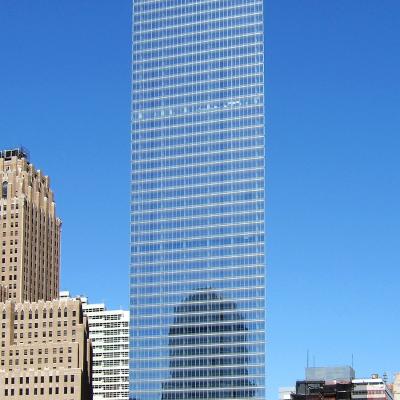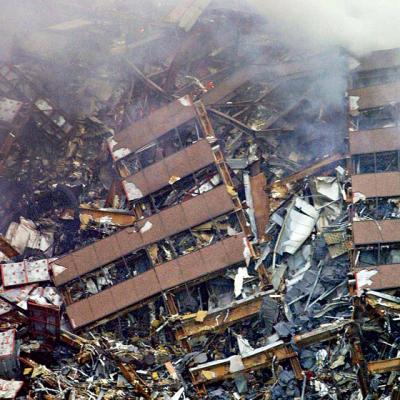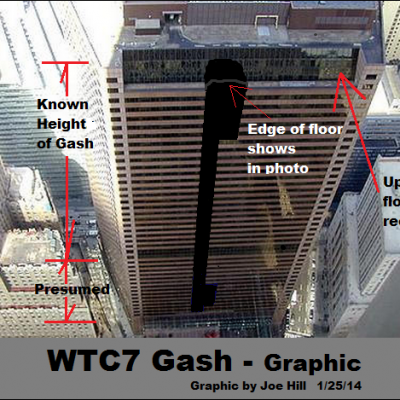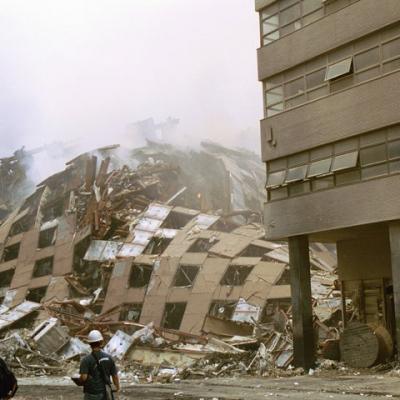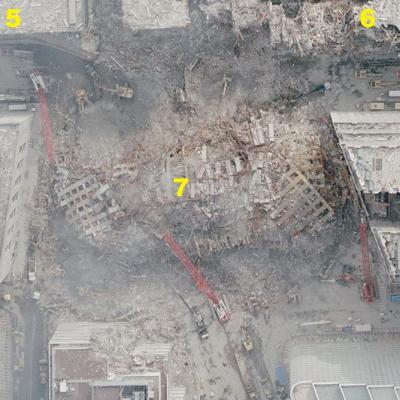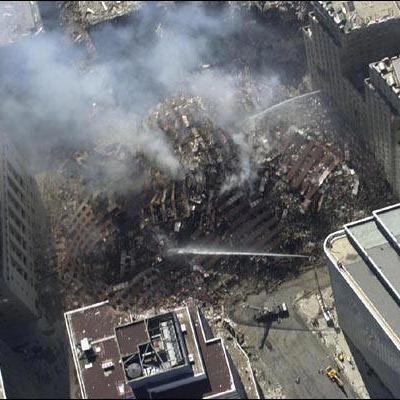However, this conclusion appears to be based only on circumstantial information - the simple loss of SSR flight data to Air Traffic Control (ATC) – and seems unsupported by conclusive information. Moreover, ATC was nevertheless still able to tag and track three flight’s primary radar returns and estimate their location, direction, ground speed, and even altitude changes.
Perhaps the most significant consequence of the lost September 11 flight SSR data to ATC was a circumstantial impression of accused hijacker flight deck takeovers. As can be shown, aircraft Mode S transponder SSR information can be caused to vanish from ATC radar displays by other documented means. Coincidentally or not, the only September 11 flight with a continuously operative transponder (United 175), was also the only flight with a transponder able to warn away the only other flights in serious danger of colliding with a September 11 flight, thus facilitating its subsequent impact with World Trade Center 2 (WTC 2).
From the Federal Aviation Administration (FAA):
“The secondary radar uses a second radar antenna attached to the top of the primary radar antenna to transmit and receive area aircraft data for barometric altitude, identification code, and emergency conditions. Military, commercial, and some general aviation aircraft have transponders that automatically respond to a signal from the secondary radar by reporting an identification code and altitude ... The primary surveillance radar uses a continually rotating antenna mounted on a tower to transmit electromagnetic waves that reflect, or backscatter, from the surface of aircraft up to 60 miles from the radar.” [1]
Just prior to the year 2000, a major modernization of the FAA’s entire Air Route Traffic Control Center computers in the continental United States was scheduled to be completed.
From the FAA:
“The computers receive, process, coordinate, distribute, and track information on aircraft movement throughout the nation's airspace that includes oceanic international air traffic. The computers provide data interfaces to all types of FAA facilities ... and the military.” [2]
In the case of UA 175, although its transponder-broadcasted flight ID number reportedly changed several times following its alleged hijacking, the transponder itself continued to broadcast, unlike the other three flights, making it known to the Traffic Collision Avoidance Systems (TCAS) of nearby aircraft. TCAS avionics will warn aircraft flight crews of mid-air collision risks posed by similarly equipped aircraft.
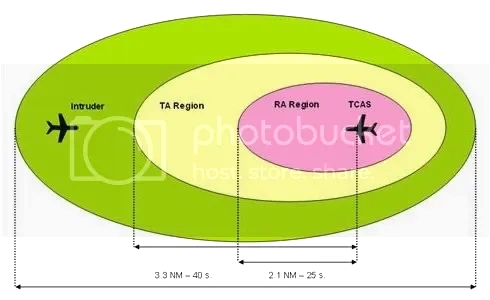
Of the four wayward September 11 flights, only UA 175 experienced serious near mid-air collisions with other non-wayward commercial flights. These were Delta Flight 2315, US Airways Flight 542, and Midwest Airlines Flight 7. [3] Coincidentally or not, UA 175 was also the only September 11 flight with a transponder that continued to operate following its unauthorized course change, helping it avoid at least one mid-air collision with a TCAS equipped flight and thus facilitating its own impact with WTC 2.
Referring to UA 175 and US Airways Flight 542:
“Shortly after that, the hijacked plane was headed straight for a US Airways flight. The US Airways plane's collision-avoidance system detected the approaching plane and advised the US Airways pilot to descend, which he did, averting a collision.” [4]
Delta Flight 2315 and US Airways Flight 542 were TCAS compatible Boeing 737s. Midwest Airlines Flight 7 was a TCAS compatible DC-9. The role played by TCAS during UA 175's conflicts with the Delta and Midwest flights is unclear.
Interestingly, the FAA's "Host" ATC computer system provided an ability to anticipate route conflicts like those experienced between UA 175 and Delta 2315, US Airways 542 and Midwest 7, based on filed aircraft flight plans:
"HCS is the key information processing system in FAA’s en route environment. It processes radar surveillance data, processes flight plans, links filed flight plans with actual aircraft flight tracks, provides alerts of projected aircraft separation violations (i.e., conflicts)." [5]
UA 175’s transponder was reportedly unique to at least the United Airlines fleet, but could nevertheless be turned off. Interestingly, much of the source document for this fact regarding September 11 flight transponders has been redacted.
“An Air Traffic Control supervisor at New York Center opined that the transponder on United 175 was a newer model peculiar to the United-operated B767 fleet that could not be turned off. That was the supervisor's possible explanation of why the transponder on United 175 changed code as opposed to being turned off. A senior pilot from both United and American Airlines, familiar with cockpit details, each separately demonstrated how transponders were manipulated in the cockpit and conclusively demonstrated that the transponder in United 175 could have easily been turned off.” [6]
The four September 11 flights reportedly contained what is known as Mode S transponders:
"The Mode S transponders aboard Boeing 767 and 757 aircraft, such as those used on 9/11 as "flying bombs," deliver aircraft identification and altitude and can supplement FAA’s radar by "providing ATC and traffic alert collision avoidance system (TCAS)-equipped aircraft the ability to determine the position and heading information," according to DoT." [7]
“Mode S transponders transmit information about the aircraft to the Secondary Surveillance Radar (SSR) system, TCAS receivers on board aircraft ... This information includes the call sign of the aircraft and/or the transponder's permanent ICAO 24-bit address in the form of a hex code.” [8]
According to a safety bulletin published by the International Civil Aviation Authority (ICAO), a given Mode S transponder broadcast can be suppressed or “jammed” by another transponder broadcasting via the same unique ICAO 24-bit aircraft address already assigned to the given aircraft, causing the given aircraft’s SSR flight information to disappear from ATC radar displays, not unlike the disappearance of SSR information for all but one of the September 11 flights. The same circumstances can also cause a given aircraft’s transponder to become invisible to the TCAS systems of other aircraft.
"When two (or more) aircraft with the same (duplicate) ICAO 24-bit aircraft address is operating within range of a specific Mode S interrogator, then potentially hazardous situations can arise: One (or more) of the aircraft involved may be assessed by the Mode S interrogator to be a false or reflected echo, and subsequently ignored. These aircraft will not then be displayed to air traffic controllers." [9]
To date, only military aircraft seem to be capable of mid-flight changes of the 24-bit aircraft address that is contained within its Mode S transponder broadcasts:
"Military use of 24-bit aircraft addresses: The relatively large number of aircraft addresses for military use allows rotating the assignments of 24-bit addresses on military aircraft on a frequent basis. This rotation of 24-bit addresses however must not be done during flight. SSR Mode S Interrogators & Radar trackers: The unique property of the 24-bit aircraft address is important for the unambiguous identification of the aircraft. Effects of duplicate addresses are unpredictable. This can cause synchronous garbling, radar track swapping or dropping.” [10]
Despite September 11 flight transponder signal losses, ATC was still able to track these flights, complicating the official assumption that September 11 flight transponders were manually turned off by hijackers to evade detection and interception by U.S. air defenses.
Regarding ATC coverage of American Airlines flight 77 on September 11, 2001:
"The radar track is untagged, so he attaches a data box to it with the word “LOOK” in it. This will allow other controllers to quickly spot the aircraft. It also causes its ground speed to appear on the screen." [11]
In fact, all of the references to deactivated September 11 flight transponders within the “9/11 Commission Report” only seem to infer that the losses of SSR ATC data were due to a theorized conclusion that the transponders were manually deactivated by accused hijackers following the alleged seizures of their respective flight decks. No additional evidence is provided to support the view that September 11 flight transponders were manually turned off by hijackers.
“At 8:54, the aircraft deviated from its assigned course, turning south. Two minutes later the transponder was turned off and even primary radar contact with the aircraft was lost.” [12]
“On 9/11, the terrorists turned off the transponders on three of the four hijacked aircraft. With its transponder off, it is possible, though more difficult, to track an aircraft by its primary radar returns. But unlike transponder data, primary radar returns do not show the aircraft's identity and altitude. Controllers at centers rely so heavily on transponder signals that they usually do not display primary radar returns on their radar scopes. But they can change the configuration of their scopes so they can see primary radar returns. They did this on 9/11 when the transponder signals for three of the aircraft disappeared.” [13]
“At 8:21, American 11 turned off its transponder, immediately degrading the information available about the aircraft. The controller told his supervisor that he thought something was seriously wrong with the plane, although neither suspected a hijacking. The supervisor instructed the controller to follow standard procedures for handling a "no radio" aircraft.” [14]
“Because the hijackers had turned off the plane's transponder, NEADS personnel spent the next minutes searching their radar scopes for the primary radar return. American 11 struck the North Tower at 8:46.” [15]
“At 8:51, the controller noticed the transponder change from United 175 and tried to contact the aircraft. There was no response.” [16]
“The failure to find a primary radar return for American 77 led us to investigate this issue further. Radar reconstructions performed after 9/11 reveal that FAA radar equipment tracked the flight from the moment its transponder was turned off at 8:56.” [17]
“On American 11, the transponder signal was turned off at 8:21; on United 175, the code was changed at 8:47; on American 77, the signal was turned off at 8:56; and on United 93, the signal was turned off
at 9:41.” [18]
References:
[1] Airport Surveillance Radar
http://www.faa.gov/air_traffic/technology/asr-11/
[2] Fact Sheet – Host and Oceanic Computer System Replacement (HOCSR) Program
http://www.faa.gov/news/fact_sheets/news_story.cfm?newsId=4950
[3] September 11, 2001: Flight 175 Nearly Collides with Two Other Planes
http://www.historycommons.org/context.jsp?item=a855nearcollision#a855nearcollision
[4] A Sky Filled With Chaos, Uncertainty, and True Heroism
http://www.washingtonpost.com/ac2/wp-dyn?pagename=article&node=nation/specials/attacked&contentId=A41095-2001Sep16
[5] Air Traffic Control: FAA Plans to Replace Its Host Commuter System
http://archive.gao.gov/paprpdf2/160369.pdf
[6] COMMISSION SENSITIVE UNCLASSIFIED MEMORANDUM FOR THE RECORD: Interviews of United Airlines and American Airlines Personnel
http://media.nara.gov/9-11/MFR/t-0148-911MFR-01098.pdf
[7] The Post 9/11 Transponder
http://www.aviationtoday.com/av/issue/feature/12731.html
[8] Aviation Transponder Interrogation Modes
http://en.wikipedia.org/wiki/Mode_S#Mode_S
[9] Mode S Transponder – Incorrect Setting of ICAO 24-Bit Aircraft Address
http://ad.easa.europa.eu/ad/2011-14
[10] Mode S - Assignment of 24-bit Aircraft Addresses to State Aircraft
http://www.eurocontrol.int/mil/public/standard_page/cns_sur_modes_24bAA.html
[11] Reagan Airport Controllers Notified of Unidentified Aircraft Approaching Washington
http://www.historycommons.org/context.jsp?item=a933reaganwarned#a933reaganwarned
[12] The 9/11 Commission Report, Page 9
http://www.9-11commission.gov/report/911Report.
[13] The 9/11 Commission Report, Page 16
http://www.9-11commission.gov/report/911Report.pdf
[14] The 9/11 Commission Report, Page 18
http://www.9-11commission.gov/report/911Report.pdf
[15] The 9/11 Commission Report, Page 20
http://www.9-11commission.gov/report/911Report.pdf
[16] The 9/11 Commission Report, Page 21
http://www.9-11commission.gov/report/911Report.pdf
[17] The 9/11 Commission Report, Page 25
http://www.9-11commission.gov/report/911Report.pdf
[18] The 9/11 Commission Report, Page 454
http://www.9-11commission.gov/report/911Report.pdf

